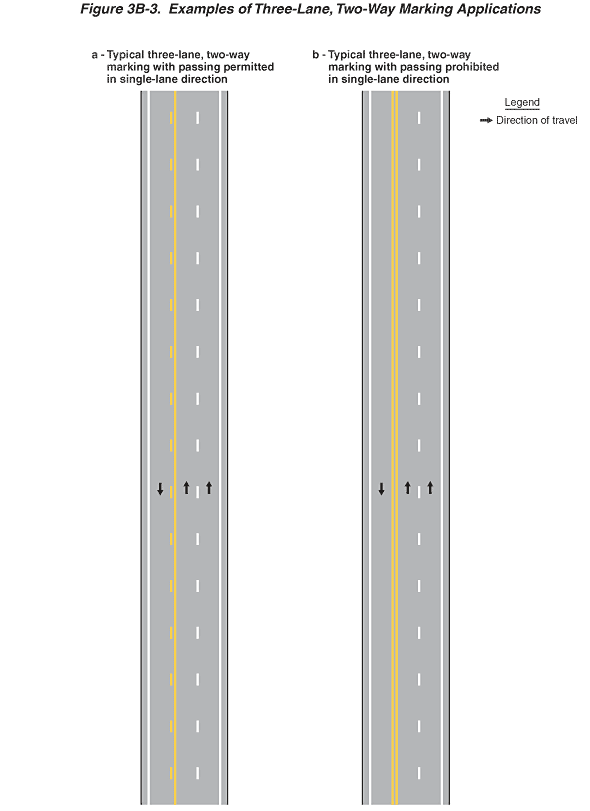|

Figure 3B-3. Examples of Three-Lane, Two-Way Marking Applications
This figure illustrates two examples of pavement marking applications
on three-lane, two-way roadways.
Two vertical roadways are shown, (a) and (b):
- Example (a) shows "typical three-lane, two-way marking
with passing permitted in single-lane direction." A three-lane
roadway is shown with arrows indicating the direction of travel
as a single lane traveling south and two lanes traveling north.
A broken yellow line is shown adjacent to the southbound lane,
and a solid yellow line is shown adjacent to the leftmost of the
two northbound lanes. A broken white line is shown separating
the two northbound lanes. A solid white line is shown on the outer
edge of the southbound lane and the rightmost northbound lane.
- Example (b) shows "typical three-lane, two-way marking
with passing prohibited in single-lane direction." A three-lane
roadway is shown with arrows indicating the direction of travel
as a single lane traveling south and two lanes traveling north.
A solid double yellow line is shown separating the southbound
lane from the leftmost northbound lane. A broken white line is
shown separating the two northbound lanes. A solid white line
is shown on the outer edge of the southbound lane and the rightmost
northbound lane.
A legend shows a black arrow indicating the direction of travel
in the lanes.
Back
to Chapter 3B
|

